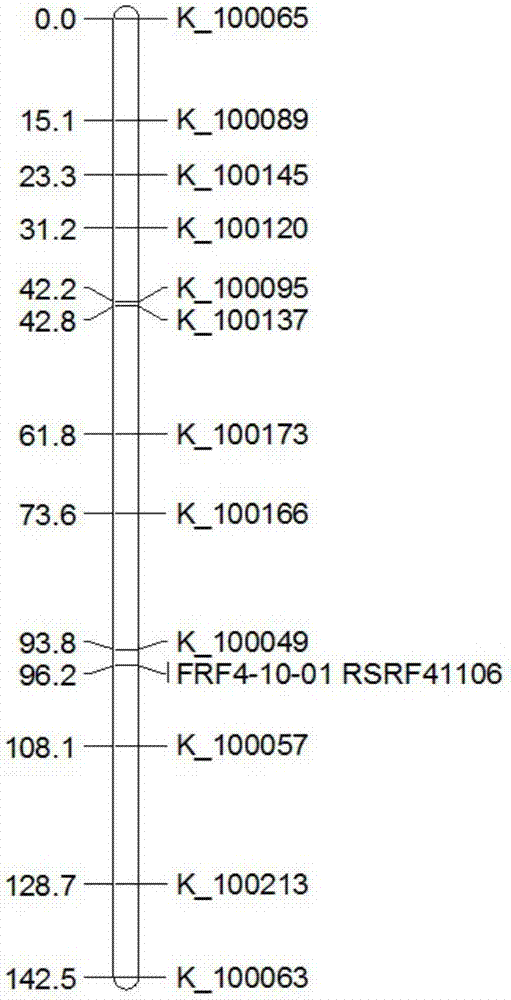Rice fertility recovery gene auxiliary breeding molecular marker and application thereof
A fertility restoration gene and molecular marker technology, applied in the fields of molecular biology and crop breeding, can solve the problems of long time-consuming, easy to be restricted by environmental conditions, and low selection efficiency, so as to improve work efficiency and eliminate aerosol pollution , The effect of reducing the waste of human resources
- Summary
- Abstract
- Description
- Claims
- Application Information
AI Technical Summary
Problems solved by technology
Method used
Image
Examples
Embodiment 1
[0027] Example 1 Obtaining of Rice Fertility Restoration Gene Assisted Breeding Molecular Markers
[0028] 1. Primer design
[0029] According to the published linkage markers and comparison with the reference genome, the gene Rf3 is located in the Chr.1,5598557-6278465 interval. We took the gene mapping interval as the center and expanded 50Kb to both sides, and used 3000 rice resequencing databases to extract the SNP sites in the expanded interval. Use gene donor and recipient resequencing data for analysis, SNP site mining, and at the same time, compare the cloned Rf4 gene sequence with the Nipponbare sequence, and based on the PIC value and whether the 50 bp around the SNP site contains other SNP sites, etc. Make a selection. The flanking sequences of the selected SNP sites were extracted, and primers were designed using the online primer design website BatchPrimer3 (http: / / probes.pw.usda.gov / batchprimer3 / ). There are three primers for each marker, and the 5' ends of tw...
Embodiment 2
[0051] Example 2 Verification of genetic position and phenotype of SNP markers RSRF30121 and FRF4-10-01 co-segregated with rice fertility restoration genes
[0052] 1. Marker genetic position verification
[0053] The F2 cross population (88 individual plants) of Zhonghui 8015, the donor parent of Rf3 and Rf4, and Neixiang 5A, the recipient parent, was used for marker genetic position verification. Using 15 polymorphic SNP markers in the parents and RSRF30121 and FRF4-10-01 of the present invention for genetic position analysis, the results showed that the marker RSRF30121 of the present invention was mapped to the 21.6cM position of chromosome 1. The 13 SNP markers with polymorphism in the parents and the FRF4-10-01 of the present invention were used for genetic position verification, and the marker FRF4-10-01 of the present invention was mapped to the 96.2cM position of chromosome 10.
[0054] 2. Marker phenotype verification
[0055] Using the F2 population of the donor p...
PUM
 Login to View More
Login to View More Abstract
Description
Claims
Application Information
 Login to View More
Login to View More - R&D
- Intellectual Property
- Life Sciences
- Materials
- Tech Scout
- Unparalleled Data Quality
- Higher Quality Content
- 60% Fewer Hallucinations
Browse by: Latest US Patents, China's latest patents, Technical Efficacy Thesaurus, Application Domain, Technology Topic, Popular Technical Reports.
© 2025 PatSnap. All rights reserved.Legal|Privacy policy|Modern Slavery Act Transparency Statement|Sitemap|About US| Contact US: help@patsnap.com



